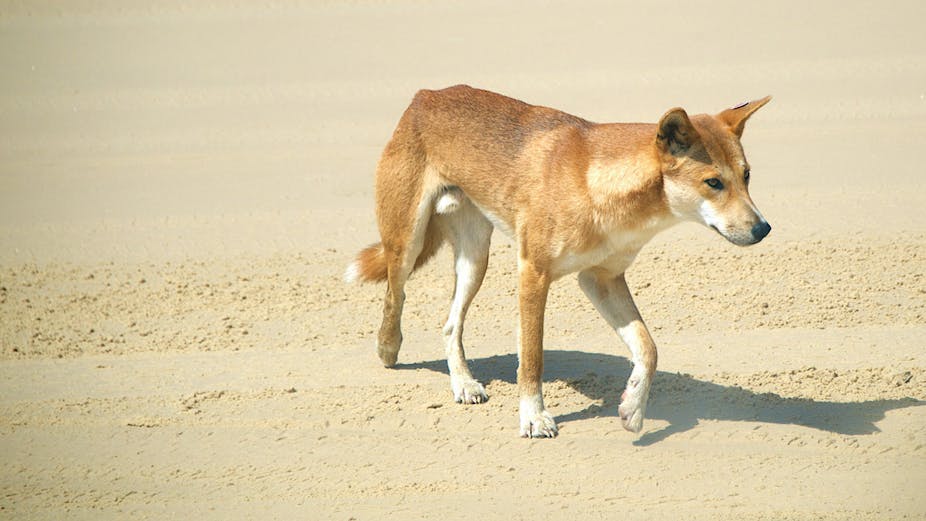New research shows that culling dingoes on Queensland’s popular Fraser Island has not harmed the sustainability of the dingo population.
The research, published recently in a special issue of the Australasian Journal of Environmental Management, shows that 110 dingoes have been humanely euthanised for unacceptable or dangerous behaviour on Fraser Island between January 2001 and September 2013, with between 1 and 32 dingoes killed in any given year.
The conservation of dingoes on islands is important for protecting them against substantial levels of hybridisation with domestic dogs, which threatens the future of pure dingoes on the mainland.
But if there were any concerns that the destruction of dingoes may compromise the population’s conservation, the available data make it clear that dingoes are doing just fine under current management practises.
Life and death on the island
Comprehensive remote-camera and satellite tracking studies undertaken in 2012 showed that there are between 76 and 171 adult dingoes on Fraser Island.
Perhaps as few as 19 of these are adult females that successfully raise a litter each year, with an average of 4.5 pups per litter.

This means that at least 80-90 new pups are born on the island each year, and about the same number must die each year to keep a stable population (for dingoes generally, it is normal for only about 30% of pups to survive to reach 2 years of age).
Hence, since 2001, perhaps as many as 1,300 dingoes have been born on the island, yet only 110 dingoes have been humanely destroyed for unacceptable behaviour.
Of the destroyed dingoes for which we know their age (95 dingoes) and/or gender (97 dingoes), two-thirds were sexually immature, young males.
No more than four female dingoes of any age were destroyed during dingoes’ annual breeding season. On only one occasion was a subordinate adult female dingo destroyed during this season, and at a time when two litters were successfully raised by her pack.
It’s difficult to see how the removal of usually only a few juvenile males each year is going to affect the long-term breeding capacity of the island’s adult females.

Perhaps the best evidence of this is the persistence of the most heavily persecuted pack on the island, at Eurong. If we were going to see negative effects of culling on Fraser Island’s dingo packs then this is where we would expect to see it best.

Up to four dingoes have been humanely destroyed at Eurong each year since January 2001, yet the Eurong pack persists and has continued to successfully produce one to two litters of up to 8 pups each almost every year.
These data do not suggest that humanely destroying a few individuals from a dingo pack each year will inhibit their reproductive output or alter the stability and persistence of packs or populations.

The big picture
Humane destructions represent a very minor fraction of all the dingo deaths on the island each year, which occur mostly from normal natural causes such as starvation or fighting.

Despite this, the management of dingoes on Fraser Island is one of the most heavily scrutinised (by the public) wildlife management issues in Australia, as described in a recent review of dingo management practises there, which was independently reviewed.
The death of any dingo on Fraser Island is unfortunate. However, some dingoes do become dangerous to people. This is considered an unacceptably high risk to the public, which is why some dingoes are humanely destroyed.
This research uses the available data on humane destructions (which can be freely downloaded here) to simply describe the likely effects of culling on the dingo population. Whether or not dingoes should or shouldn’t be humanely destroyed is a separate issue not addressed in the study.
Fraser Island is a beautiful place to visit, and the dingoes there are beautiful too. It’s reassuring to know that both can be preserved, even if a few high-risk dingoes must be destroyed from time to time.

